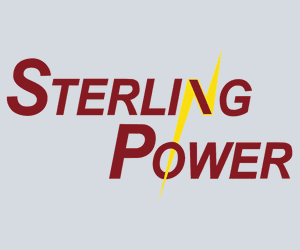Profiles: Company Profiles
Recoheat
Feeling the Heat
When we heard that the Recoheat system could double the efficiency of a solid-fuel stove and halve the cost of fuel, we were intrigued.
With inflation rising and the cost of living increasing daily, saving money on fuel is something everyone is thinking about. So perhaps the Recoheat system for solid-fuel stoves is one way for boaters and businesses to address that problem? Recoheat’s Managing Director Will Burrows was keen to answer our questions and explain how this revolutionary new product works.

How does the Recoheat system work?
Traditionally, solid-fuel stoves could only begin to heat a boat when the stove itself became hot, and then relying upon convection to push warm air around. The Recoheat system is fitted into the flue of the stove and it works by collecting heat which would otherwise disappear up the chimney, and then pushing that hot air out into the room under pressure. This means you begin heating the boat long before the stove itself gets hot, and it continues pushing out heat long after the stove cools.
Also, by pushing warm air under pressure, the heat is circulated around the boat without having to rely on convection from the stove. It’s actually distributed as the air pressures in the warm and cold areas equalise, so the warm air is drawn into the cold, just like hot and cold water mixing.
The flow of warm air is also a highly effective way to eliminate condensation.
How does this help to reduce fuel costs?
As mentioned above, a stove normally works by collecting heat from the fire in the steel or cast-iron body, and releasing it through convection into the room. The rate of convection is dictated by the temperature of the body of the stove. However, this is inefficient. The room won’t get warm until the stove itself heats up, and any fuel you’re burning during this time isn’t heating the boat.
Recoheat salvages the heat which would otherwise disappear up the chimney while the stove itself is warming up, and crucially, when it’s cooling down too. Convection flows drop off rapidly when the stove cools, but the Recoheat pump continues blowing air heated by the embers for hours after you stop fuelling. So consumption is reduced in two ways
1. You won’t need to burn so much fuel because you’re not having to run the stove so hot: you just need to keep the flue hot and the stove heat will still be circulated all around the boat
2. The burn time of the stove can be significantly decreased because it will circulate heat for hours as the stove cools via the flue.
Instead of one end of the boat being too hot and the other end being too cold, the whole boat reaches a constant, moderate temperature.
The flames from even a small amount of lit kindling are producing more than 500° of heat at the bottom of the flue where the Recoheat gathers it. Even if the stove cools, the fuel inside is still burning at the same temperature, and that’s the heat we’re gathering.
The fuel saving for a large stove is more than for a small stove because the stove hasn’t got to be as hot to achieve a better heat transfer. Our customer with the biggest stove, a Hunter Herald 80b with a 17kW to 21kW output, reckons she’s using a third of the fuel to achieve an even warmth across a large room. A smaller stove won’t see quite that sort of saving because the fire is already smaller, but the period in which you’ll get significant heat without refuelling is still several hours. If you leave the pump going all night, you’ll probably be getting an airflow at 30°C in the morning, which will still take the edge off and make warming the boat much quicker when you start the fire up again.

The system can’t possibly double the heat output of the stove, can it?
Yes, it can, partly because of the heat output, partly because of the change in airflow, and partly because it delivers heat for longer.
The fuel isn’t providing more heat energy. We’re simply recovering heat from directly above the heat source in the hottest part of the stove, pumping it straight into the boat rather than losing it up the chimney, and using it to draw the heat from the stove around the boat much more effectively.
So, what’s the science behind Recoheat?
It’s all about air turbulence. Still air doesn’t transfer heat very well at all, which is why air gaps and bubble wrap make such good insulators. The hot air molecules and cold air molecules don’t interact much when they’re still.
However, if you add turbulence and make the air move it’s a different story. Moving air molecules transfer heat very well indeed, so much so that the warm air is actively drawn to cold areas. This means the parts of the boat which would normally be colder, such as the area furthest from the stove, the windows, and the underwater areas near the floor – all these cooler parts actually attract heat and become warm when the air is made turbulent by the Recoheat output.
The key point to remember is that we’re not using the electric pump to push warm air around the boat. We’re using it to make the air turbulent, and turbulent air transfers heat much more efficiently.
How noisy are the pumps?
The aquarium pumps we supply are designated ‘super-silent’, and we get around almost all of the sound created by the pump with a sound suppressor, which is supplied as standard. This pretty much takes the hum out completely.
The sound that does remain is the hiss of air coming through the outlet pipe, which increases incrementally as the heat and airflow increase. You can listen to the sound of the hiss on our videos, where we measure the levels being produced. It’s worth remembering that the hiss in the videos is somewhat louder than normal because we have the thermometer probe in the airflow, so it’s actually a lot quieter than you’ll hear in the videos. It’s not as noisy as a fan heater or aquarium, for example, and you soon get used to it and don’t notice. If you listen for it you’ll hear it, but if you don’t listen for it, you won’t hear it at all.
How much electricity does the pump use?
The pumps we supply as standard are rated to use 37W to operate at 60 litres per minute, so it uses less power than an old-fashioned light bulb. To compare, you’ll use much the same electricity in a week that you’ll use boiling a kettle once. In fact, real-life energy consumption is even less than that. We tested the Recoheat pump in a lab and found that they actually run at 17W when in operation.
Does the unit need maintenance?
No, it doesn’t, except for the routine cleaning you’ll already be doing when you sweep the flue. As for the pump, we supply the system with one of the most popular large aquarium air pumps on the market which is famed for its reliability and designed for silent operation. The pump comes with a two-year warranty, and it can be replaced with any other similar pump if it fails after the warranty period.
Can I install the unit myself?
As a boatyard or boat-builder who is already fitting solid-fuel stoves aboard boats to Boat Safety Scheme compliance standards, fitting the Recoheat is a simple, five-minute job.
We’d recommend boat-owners without the relevant expertise recruit a specialist to do the job for them, just to ensure it is done safely. We have a list of registered installers you can call on, on the website at recoheat.co.uk/installers, or you can go to the Hetas website and find someone in your area. If you’re still struggling, contact us and we’ll happily help you find someone in your area.
Does the unit slow or cool the updraught in the chimney and cause problems?
No, it doesn’t. This was a key part of the BSRIA external testing: they measured the flow and temperature right up the 4.5m flue and could detect no variation with the unit running or not.
Will the unit blow fumes into the room?
No. The air blowing through the unit never comes into contact with the air or smoke in the stove or flue: it passes through a sealed unit.
Is the hot air being pumped into the room hot enough to cause burns?
Only in an area just above the stove, which would already burn you. You have to be careful when you light the stove because the outlet is hot within a minute or so when the stove is still cool, but because it’s a turbulent airflow, you can hear it, and it disperses the heat really quickly so that it’s not going to burn you beyond about 4in. But it’s a fire, so you do have to be careful with it.

Kevin Haworth and Luke Burrows.
Is Recoheat manufactured in the UK?
Yes, it is, completely. We don’t make the air pumps, but the units and components are made in the UK.
Can you clean the flue with the unit installed?
Yes - the gap in the middle is 65mm, so takes a small soft chimney brush or a rotating head, which are usually 25mm and can go smaller. The cheap Typhoon make doesn’t go through, so you’ll need a brand with a small head.
Does the system comply with British and European manufacturing standards?
Yes, it does: it’s manufactured to BS EN-1856-2-2009 and is CE marked for use in dwellings.
Where did you get the Recoheat idea from?
Kevin, the inventor had spent time in Australia where they have blown-air heating and cooling systems, but started off investigating using water because he’s a plumber. Pressurised water is really dangerous though, and the idea to use air came in a moment of inspiration.
Why has nobody else done it before?
It’s very counter-intuitive. Kevin only discovered the unique properties of the device through experimentation. He was just trying to increase the volume of air rather than the temperature. Our research engineers didn’t believe it when we took the device to them and were astonished to find it works. And we’ve only discovered the effect as a heating system through our own experiments. A recent revelation was that it heats to the floor in stone houses – so warms people’s feet. We’ve had quite a job trying to explain what people experience, and it’s only working with scientists that has enabled us to both prove and understand it.



